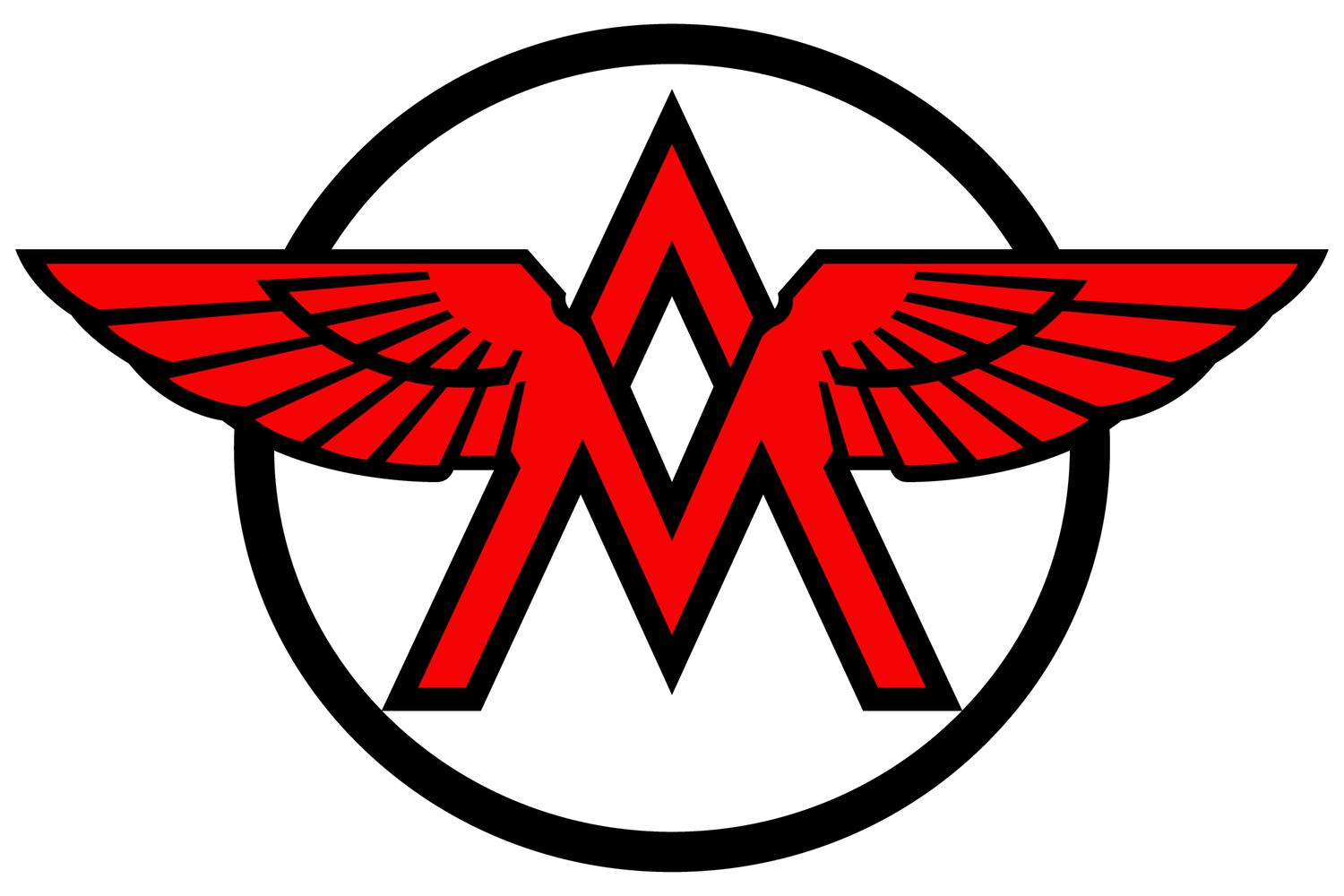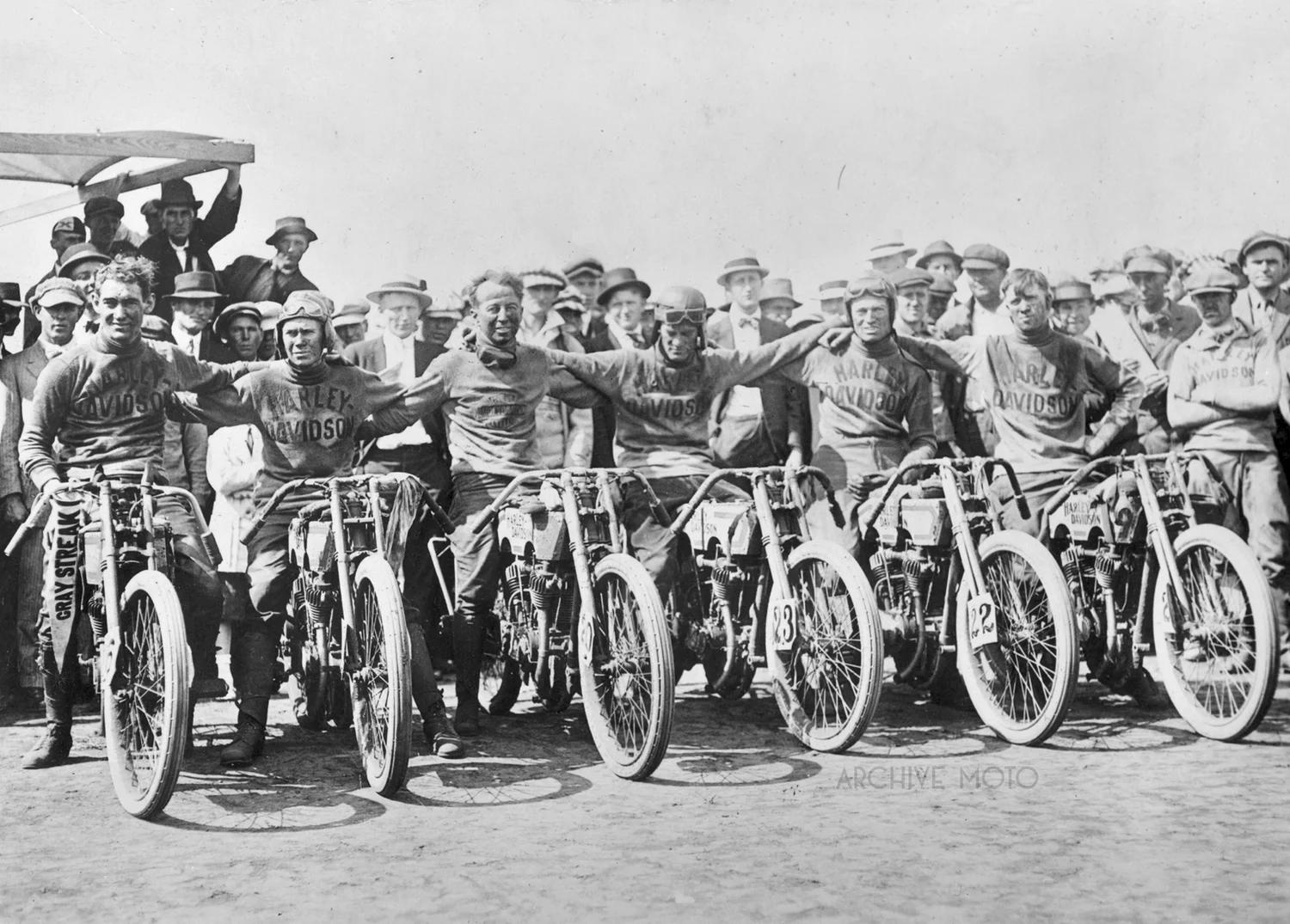The first decade of the American motorcycle was nothing short of sensational. Hundreds of manufacturers turned out thousands of increasingly capable machines. In a time when automobiles were still prohibitively expensive, motorcycles offered people of every status a modern mode of transportation. Local clubs sprung up across the country as did numerous trade publications describing the wide variety of motorcycling life. Racing had become one of the most popular sports in the country and having reached a national level, the first racing stars began to emerge along with the first factory teams. Horse tracks remained an accessible venue for competitors and spectators alike, but hill climbs and multi-day endurance runs allowed manufacturers a chance to truly test their machines. Motorcycle exhibitions were still a popular featured event on the 1/8th mile velodromes, but the machines grew too powerful for these small wooden tracks resulting in the emergence of a new type of venue that would take the country by storm... the American Motordrome. These bygone cathedrals of frenzied triumph and recurrent tragedy produced a new breed of professional, restless gentlemen of a newly dawned 20th century who put their lives on the line every week to the delight of the enraptured masses. The brainchild of British high-wheel cycle champion John Shillington Prince, 26 stadium motordromes were built across America between 1909 and 1914, the first of which, the Los Angeles Coliseum opened in March, 1909. Generally 1/4 mile long circles with banking ranging from a soft 20 degrees to a nearly vertical 62 degrees, the tracks featured grandstand seating for up to 10,000 along the rim and were typically bathed in electric light as night races were a favored spectacle. For those few daring enough to pilot their raw and untethered machines around these steeply banked, and often times roughly constructed board tracks a prosperous life awaited, one full of adrenaline, accolades, and affluence. Sadly though not all would cross the finish line and dozens of young men, most with with young families met a gruesome fate inside these 20th century coliseums. World War I hastened the inevitable end to what had been the intense and tumultuous five year boom of the American Motordrome. The inherent danger of increasingly capable machines, frequent weather disruptions, exceedingly high maintenance costs, and an undercurrent of distaste for the tragic gore made for the saucer’s abbreviated life span. Though the motordrome moniker would live on in the larger wooden speedways and smaller traveling Wall of Death thrill shows that were to come, the circular wooden bowls that spawned the name, captivated a nation, and helped foster a new American industry began disappearing by 1915, and were officially banned in 1919.
Pioneer board track racers Morty Graves and Al Ward neck and neck on the 48 degree banked turns of the Los Angeles Coliseum in 1910. The LA Coliseum was America’s first board track motordrome built by Jack Prince in the Spring of 1909 after scaling up his initial experiment of a slightly larger wooden bicycle velodrome track in Clifton, NJ the year prior. An experiment in design, the LA Coliseum was not actually circular but an oval featuring flatter straightaways and banked corners, a design Prince would return to in 1915 with the introduction of his massive multi-mile long board track super speedways. The oval design, a direct adaptation of his wildly successful bicycle velodromes did not translate as well as he had hoped and riders complained that it was difficult to take the increasingly powerful motorcycles to their top speed given the transition in banking. By the end of 1909 however, Prince would travel to Springfield, MA, home of Indian Motocycles to build America's first circular, continuously banked motordrome and the Golden Age of racing had begun.







